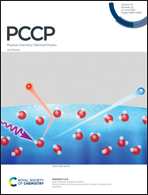Cytotoxicity of ZnO nanoparticles under dark conditions via oxygen vacancy dependent reactive oxygen species generation†
Abstract
The antimicrobial and cytotoxic effects of zinc oxide nanomaterials are popularly thought to be occurring due to zinc ion leaching, but the exact mechanism of cytotoxicity is controversial and not fully understood. Recent studies have shown that oxygen vacancy defects in the nanoscale zinc oxide can generate reactive oxygen species (ROS) under dark conditions and may induce cytotoxicity. In this work, we show that the cytotoxicity of zinc oxide nanoparticles is directly correlated with oxygen vacancy defects that generate ROS under dark conditions. More specifically, we designed zinc oxide nanoparticles with controlled oxygen vacancy defects by controlled gallium doping and showed that the ROS generation property of zinc oxide nanoparticles under dark conditions is directly correlated with oxygen vacancy defects. Further studies show that superoxide radicals and hydrogen peroxide are the primary ROS that are produced under dark conditions. These colloidal nanoparticles are used for cell labeling and therapy via intracellular ROS generation without any light exposure. The designed nanoparticle can be used for the formulation of advanced antibacterial and antimicrobial materials and other cell therapy applications.



 Please wait while we load your content...
Please wait while we load your content...